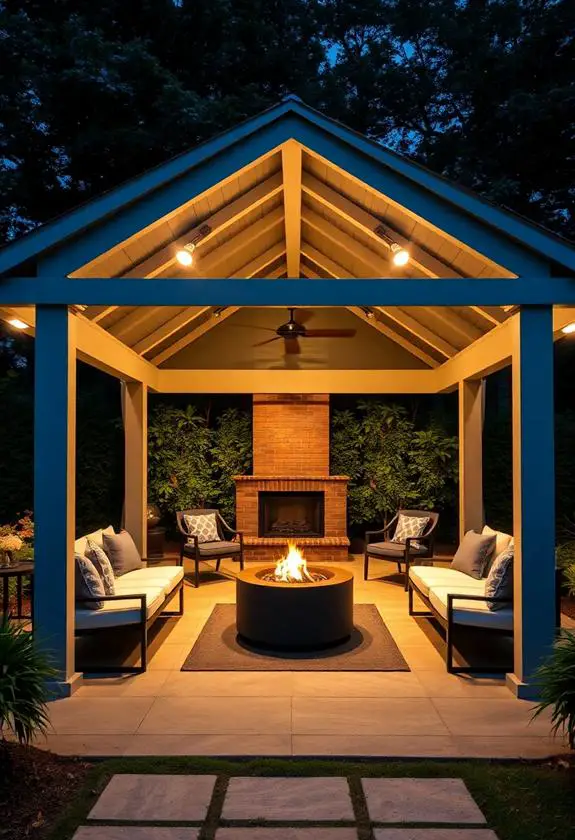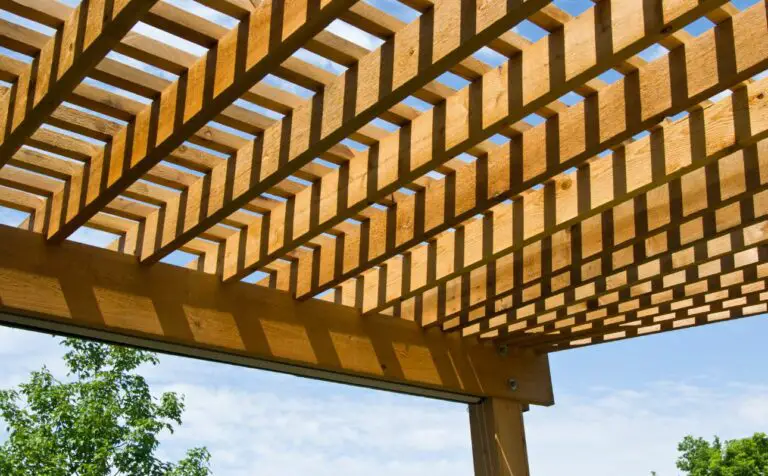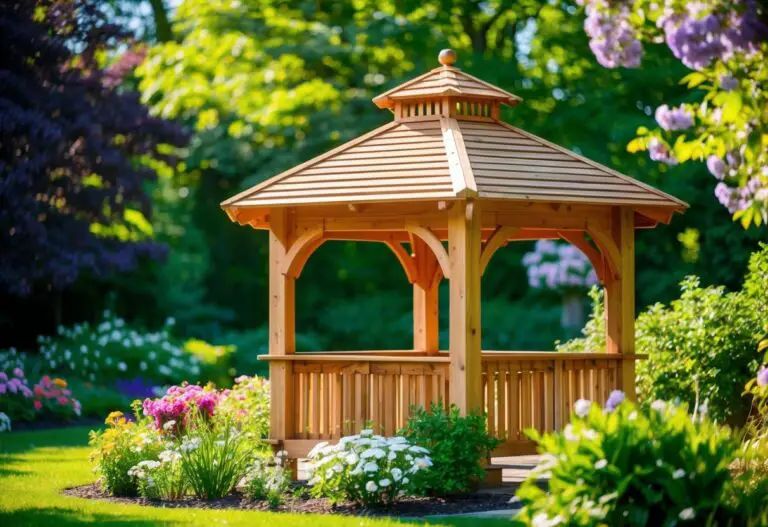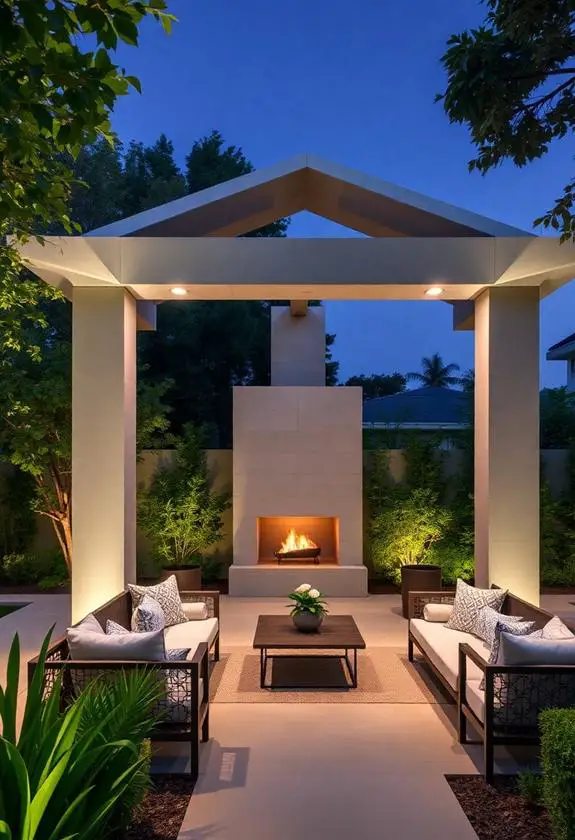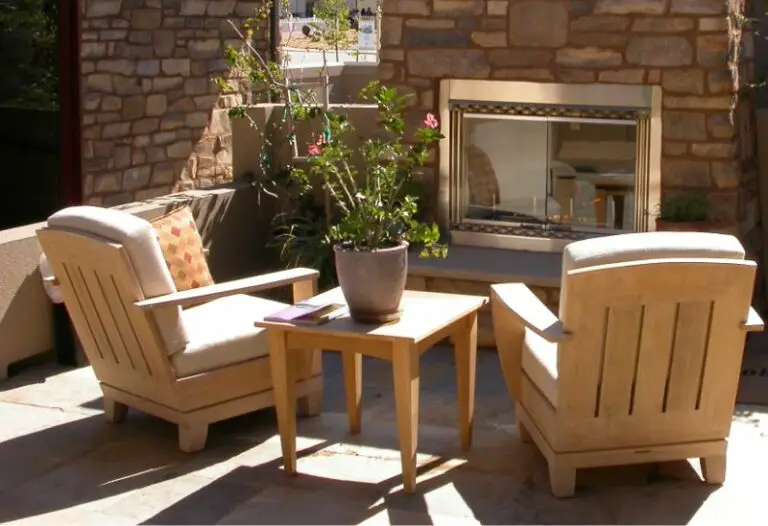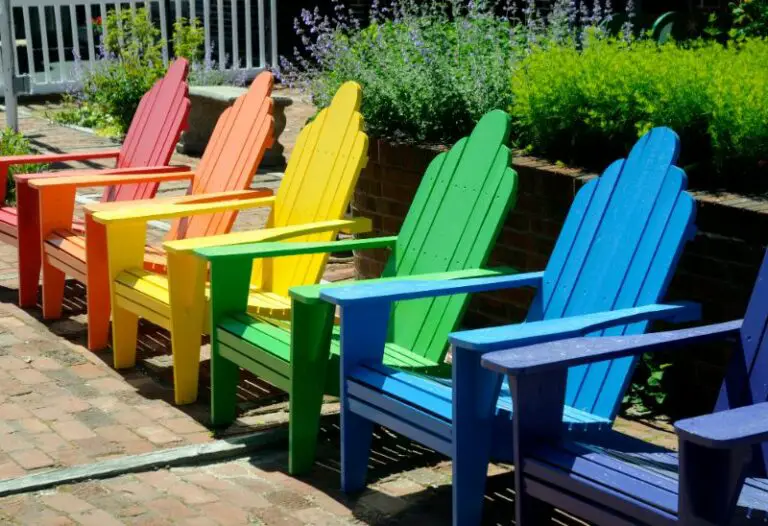Are you looking to enhance your outdoor space with an elegant structure but confused about whether to opt for a pergola or a pagoda?
The purpose of a pergola is to provide shade and define an outdoor space, such as a patio or garden. In contrast, a pagoda is a tiered tower-like structure with multiple eaves and curved roofs commonly found in East Asian architecture, particularly in Japan and China.
Pagodas are traditionally used for religious purposes but are also popular as garden ornaments.
In this article, we will help you understand the difference between these two popular outdoor structures and assist you in selecting the perfect one for your needs and preferences.
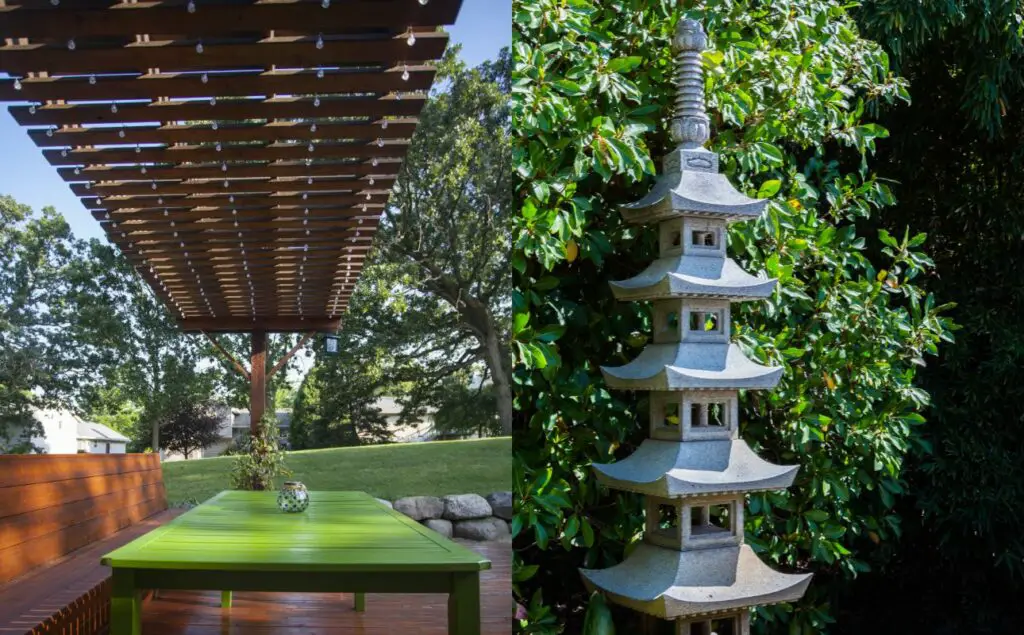
Comparison Chart
Here’s a comparison chart between Pergolas and Pagodas
| Pergola | Pagoda | |
| Definition | Outdoor structure consisting of vertical posts that support a roof made of horizontal beams and rafters | Tiered tower-like structure with multiple eaves and curved roofs, traditionally used for religious purposes |
| Design | Open and airy structure with a flat or slightly angled roof, often with latticed sides for climbing plants | Multi-tiered structure with curved roofs and eaves, often adorned with intricate decorations |
| Purpose | Provides shade and defines an outdoor space, such as a patio or garden | Used for religious purposes and as garden ornaments |
| Materials | Can be made of wood, vinyl, metal, or fiberglass | Typically made of wood or stone |
| Cultural Significance | Popular in Western cultures as a decorative and functional outdoor structure | Primarily Found in East Asian Cultures, Particularly in Japan and China, and Associated with Religious and Spiritual Practices |
| Maintenance | Requires occasional cleaning and upkeep, such as staining or painting | Needs regular maintenance to prevent damage from weather and insects, and to preserve its intricate decorations |
| Cost | Can range from affordable to expensive depending on the size, materials, and complexity of the design | Generally more expensive than pergolas due to their intricate design and construction |
| Functionality | Provides shade and enhances the aesthetic appeal of outdoor spaces | Primarily serves as a decorative or religious structure, rather than a functional one |
| Versatility | Can be customized to suit different styles and preferences, and can be used in various outdoor settings | Primarily used in specific cultural or religious contexts, and may not be suitable for all outdoor spaces or design styles |
Note: This table is not meant to be an exhaustive comparison of all aspects of pergolas and pagodas but rather a summary of some of their key differences.
Pergolas vs. Pagoda: What are the differences
Size Comparison:
Pergolas are typically rectangular or square in shape and range in size from small structures that can accommodate a few chairs or a dining table to larger structures that can cover an entire patio or outdoor living space.
Pagodas, on the other hand, are generally larger in size and feature multiple tiers or levels, with each level decreasing in size as it goes up.
Purpose Comparison:
The primary purpose of a pergola is to provide shade and define an outdoor space, such as a patio or garden. Pergolas also offer an attractive focal point for outdoor entertaining and can be used to support climbing plants or hanging baskets.
In contrast, pagodas are traditionally used for religious or spiritual purposes and are often found in temples, shrines, or other religious settings. They can also be used as decorative features in outdoor spaces, such as gardens or parks.
Design Comparison:
Pergolas have an open and airy design with a flat or slightly angled roof, often with latticed sides for climbing plants. They come in a variety of styles, from traditional to modern, and can be made of wood, vinyl, metal, or fibreglass.
Pagodas, on the other hand, have a distinctive multi-tiered design with curved roofs and eaves, often adorned with intricate decorations such as dragons, lions, or other mythical creatures. They are typically made of wood or stone and are associated with East Asian architectural styles.
Cost Comparison:
The cost of a pergola varies depending on its size, materials, and complexity of the design. Basic pergolas made of wood or vinyl can range from a few hundred to a few thousand dollars, while larger and more elaborate designs can cost upwards of tens of thousands of dollars.
Pagodas, on the other hand, tend to be more expensive due to their intricate design and construction. They are typically custom-built and made of high-quality materials, which can drive up the cost significantly.
Maintenance Comparison:
Pergolas require occasional cleaning and upkeep, such as staining or painting, to prevent the wood from weathering and to maintain their appearance. They also require regular inspections to ensure that the structure is stable and safe to use.
Pagodas, on the other hand, need regular maintenance to prevent damage from weather and insects, and to preserve their intricate decorations. They may require periodic repairs or restoration to maintain their structural integrity and appearance.
Note: This comparison is not meant to be an exhaustive analysis of all aspects of pergolas and pagodas, but rather a summary of some of their key differences.
How to Choose the Right One?
If you are considering adding an outdoor structure to your home or garden, here are some factors to consider when choosing between a pergola and a pagoda:
Purpose and Function
First, consider the primary purpose of the structure. If you are looking for a functional structure that provides shade and defines an outdoor space, a pergola may be the best choice. On the other hand, if you want a decorative or religious structure, a pagoda may be more appropriate.
Location
Consider where you want to place the structure. Pergolas are versatile and can be used in a variety of outdoor settings, while pagodas may be more suited to specific locations, such as gardens or religious spaces.
Size and Shape
Think about the size and shape of the structure that you need. Pergolas come in a variety of sizes and shapes, from small structures that can accommodate a few chairs to larger ones that can cover an entire patio or outdoor living space. Pagodas are typically larger and have a distinctive multi-tiered design.
Design and Style
Consider the design and style of the structure that you want. Pergolas can be customized to suit different styles and preferences, from traditional to modern, and can be made of a variety of materials. Pagodas have a distinct East Asian architectural style and are often adorned with intricate decorations.
Budget
Consider your budget. Pergolas can range in cost from a few hundred to several thousand dollars, depending on their size, materials, and complexity of the design. Pagodas tend to be more expensive due to their intricate design and construction.
Climate
Consider the climate of your location. Pergolas may be more suitable for warmer climates where shade is necessary, while pagodas may be better suited to cooler climates where protection from the elements is needed.
Ultimately, the right choice between a pergola and a pagoda depends on your specific needs, preferences, and budget.
The Bottom Line
Both pergolas and pagodas offer unique benefits and can enhance the aesthetic appeal of your outdoor space. Consider your needs and preferences carefully and choose the one that best suits your style and budget.
Remember to maintain your structure regularly to ensure its longevity and safety. With the right choice and care, your outdoor structure can provide years of enjoyment and beauty to your home or garden.
